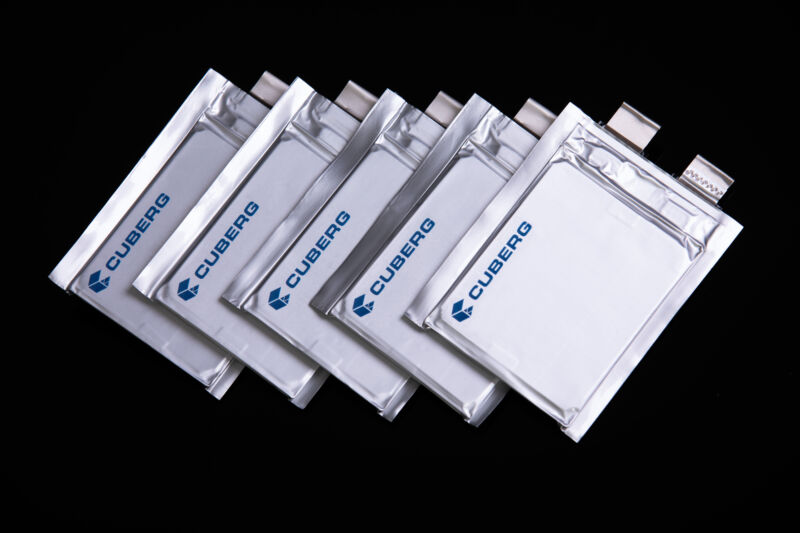While lithium-ion batteries have experienced steady improvements, a lot of research has gone into new chemistries that provide a much larger leap in performance. Some of that work has focused on materials like silicon or sulfur that can potentially store far more lithium than existing electrode materials. But other options get rid of electrode materials entirely. These include lithium-air and lithium-metal batteries.
All of these have faced issues with stability, with batteries based on the technology having a short life span compared to existing lithium-ion batteries (though batteries with some silicon are already in use). But on Thursday, a company is announcing that a lithium-metal battery it has in development has reached a stability that's competitive with existing lithium-ion batteries, retaining 80 percent of its initial capacity out to nearly 700 charge/discharge cycles—and that this has been validated by an outside testing lab.
To learn more about this advance and where lithium metal might get used, we talked with Richard Wang, founder of Cuberg, a subsidiary of battery giant Northvolt.
Going metal
Existing lithium-ion batteries have electrode materials that are able to store lithium ions, or atoms, in gaps and pockets in their structure. Lithium-metal batteries instead just form a layer of lithium at one of the electrodes, getting rid of the storage material, which saves on weight and volume. Compared to existing lithium-ion batteries, this would store the same amount of charge either in a smaller or lighter-weight battery.
So far, however, lithium-metal batteries have tended to have limited life spans. Part of the problem comes from the uneven formation of lithium deposits over the course of multiple charge/discharge cycles. This can result in the formation of metal spines called dendrites that can damage other battery components and potentially create electrical shorts. A second problem is that lithium metal is pretty reactive and can potentially undergo reactions with the chemicals in the battery's electrolyte.
The reactions themselves can degrade the electrolyte. But they can also coat the electrode with materials that make it harder to form a uniform lithium coating, creating a self-reinforcing problem. "All that new surface will react with your electrolyte and form various kinds of materials at the interface," Wang told Ars. "And then those materials tend to form also in non-uniform manners, and maybe parts of it become insulating, other parts are exposed, and then you get more and more sort of non-uniformity."
So how do you prevent this? Since its founding, Cuberg has focused on the electrolyte. The company is using an ionic liquid as the foundation of its electrolyte. Wang described this as an ionic salt that happens to be molten at room temperature (although the ions are often organic chemicals, rather than elements). These have been tried previously but tend to be viscous, which interferes with the movement of lithium ions. To help avoid this, Cuberg mixes in additional chemicals (one of them is an organic chemical called an ether) to lower the viscosity and improve the stability.
While this mixture still may react with the lithium metal, it's designed to cause fewer problems when it does. "The other key factor is, how do you tailor the reactivity so that when it does react, you get this very kind of protective, uniform surface," Wang said.
What's the outcome? For one, a significantly higher charge density. While many current lithium-ion batteries have power densities in the area of 270 watt-hours/kilogram, a pouch cell based on Cuberg's technology hit 380 Wh/kg, a gain of 40 percent. When an independent lab placed the battery on a cycle of one-hour discharges and two-hour charging, it found the battery took over 670 cycles for its capacity to drop to 80 percent of its original. For comparison, many lithium-ion batteries target a 500-cycle life span.
Wang noted that this test used a constant charging rate throughout the cycle, while many batteries now use an optimized charging routine that alters the rate based on how close the battery is to fully charged. Since creating an even lithium-metal layer is very sensitive to the amount of lithium charge carriers being deposited on the electrode, it's likely that even better performance can be achieved.



3175x175(CURRENT).thumb.jpg.b05acc060982b36f5891ba728e6d953c.jpg)

Recommended Comments
There are no comments to display.
Join the conversation
You can post now and register later. If you have an account, sign in now to post with your account.
Note: Your post will require moderator approval before it will be visible.